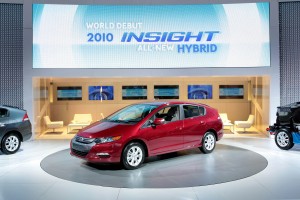
Starting in August, Honda will begin installing brake-override systems in all of its vehicles, a process it hopes to complete late in 2011.
Honda Motor Co. says it will install a brake-override system on all of its product lines, starting this year, in an effort to prevent the sort of sudden acceleration problems that have plagued its arch-rival, Toyota.
The technology is designed to disengage the engine when the brake pedal is applied, making it possible to bring a vehicle to a halt in the event the engine unexpectedly begins to race out of control.
Most Toyota products did not offer this feature, though the troubled maker has begun to install it on a number of its products in the wake of a series of recalls involving sudden acceleration. In all, about 7.7 million cars, trucks and crossovers have been recalled for the problem in the U.S., and new government data now links at least 89 deaths to runaway Toyota products. Globally, 8.5 million vehicles are involved
(Click Here for the latest on Toyota’s sudden acceleration problems.)
Honda officials say they plan to offer their first model with a brake-override system in August. The company expects to complete the roll-out of the technology by late 2011. Currently, Honda does not use a brake-override on any of its models.
“We are committed to applying Brake Priority Logic on 100% of Honda and Acura passenger vehicles produced for the North American market ,” the automaker said in a statement.
The technology was beginning to become more widespread prior to the Toyota scandal, but in recent months there has been a growing demand for brake-override systems. And they could become mandatory under new federal auto safety regulations now under consideration by the U.S. Congress.
Not everyone is in favor of brake-override technology, however, and there could be pressure on lawmakers to permit some vehicles to omit the technology on performance-oriented products, such as a Chevrolet Corvette or BMW M3. Performance drivers often use both brake and gas pedal simultaneously during aggressive cornering maneuvers, a trick that override systems would no longer permit.
